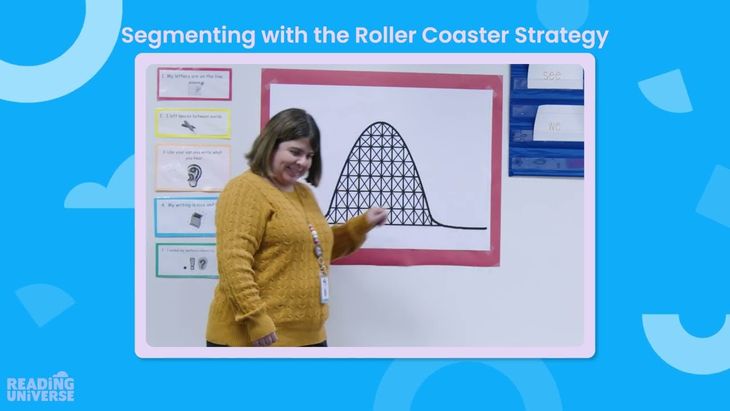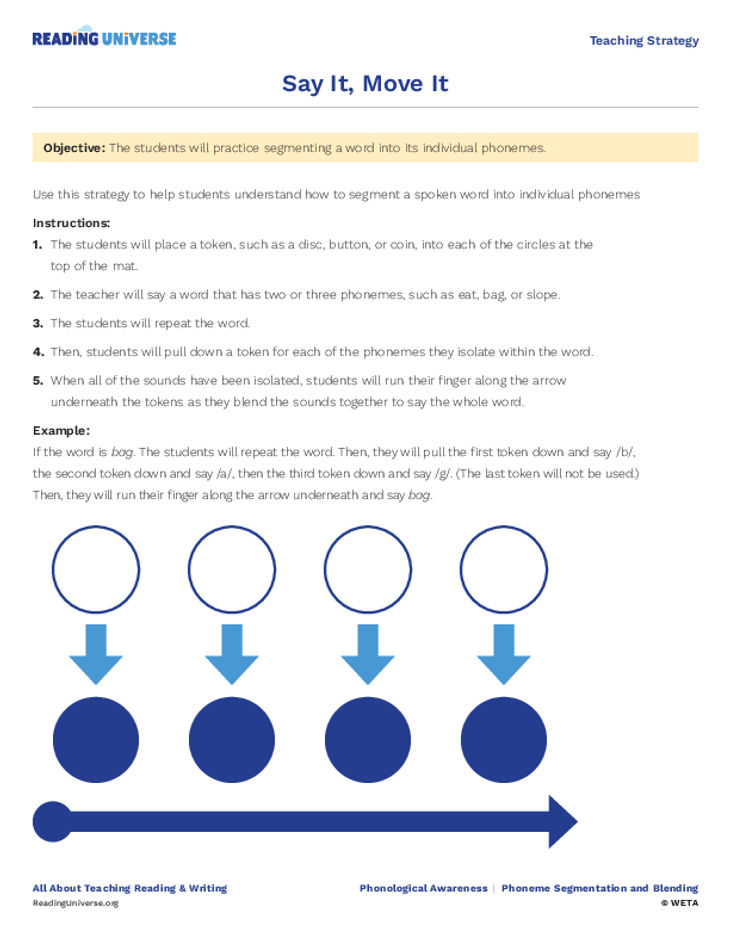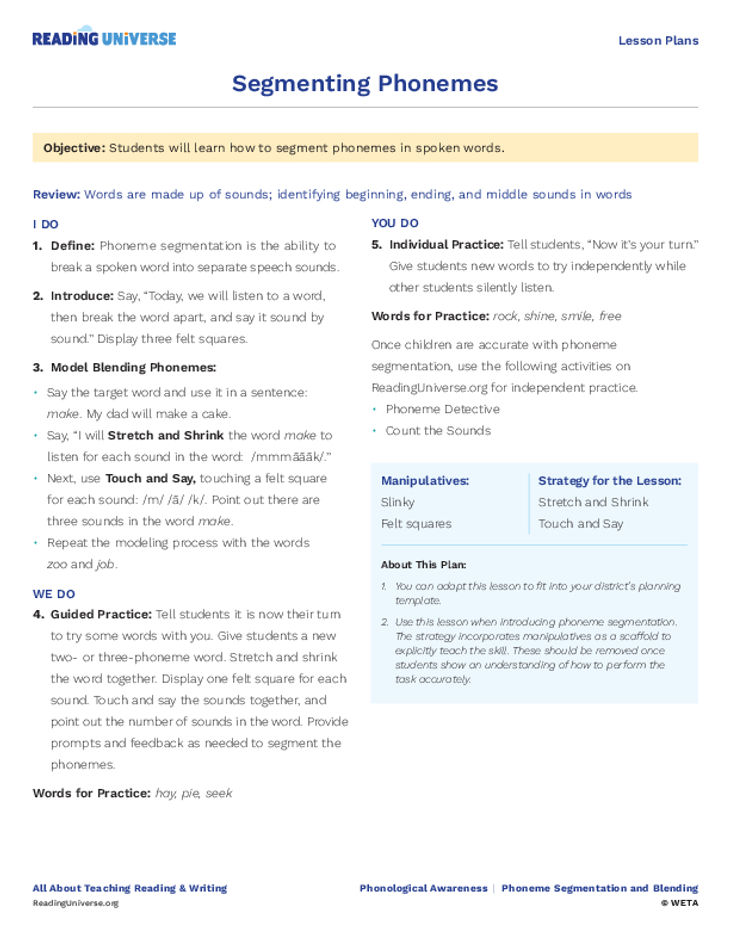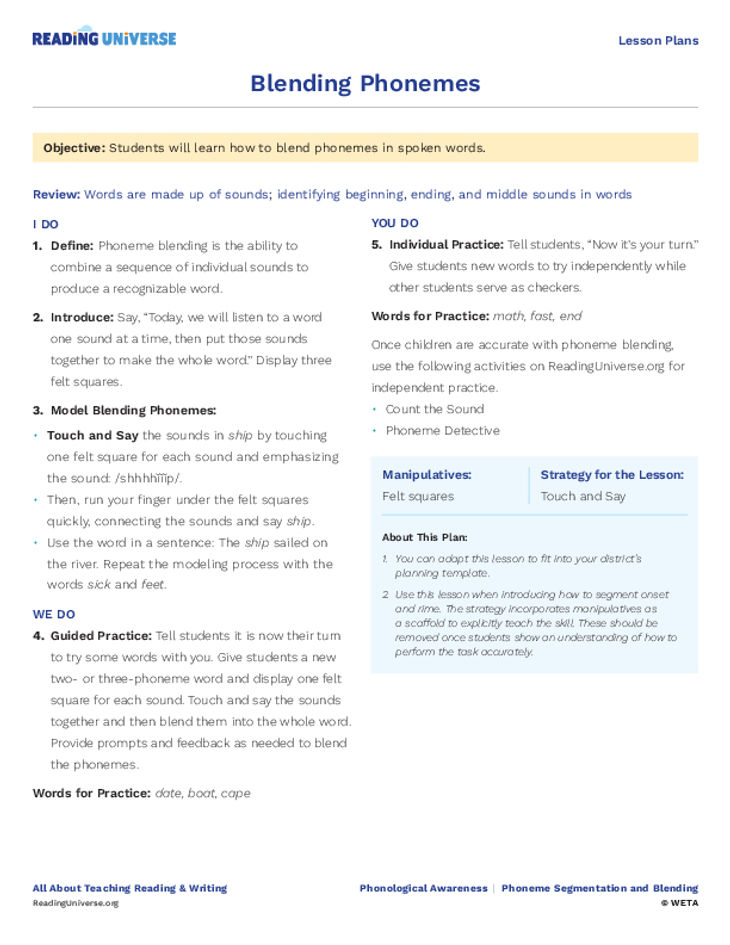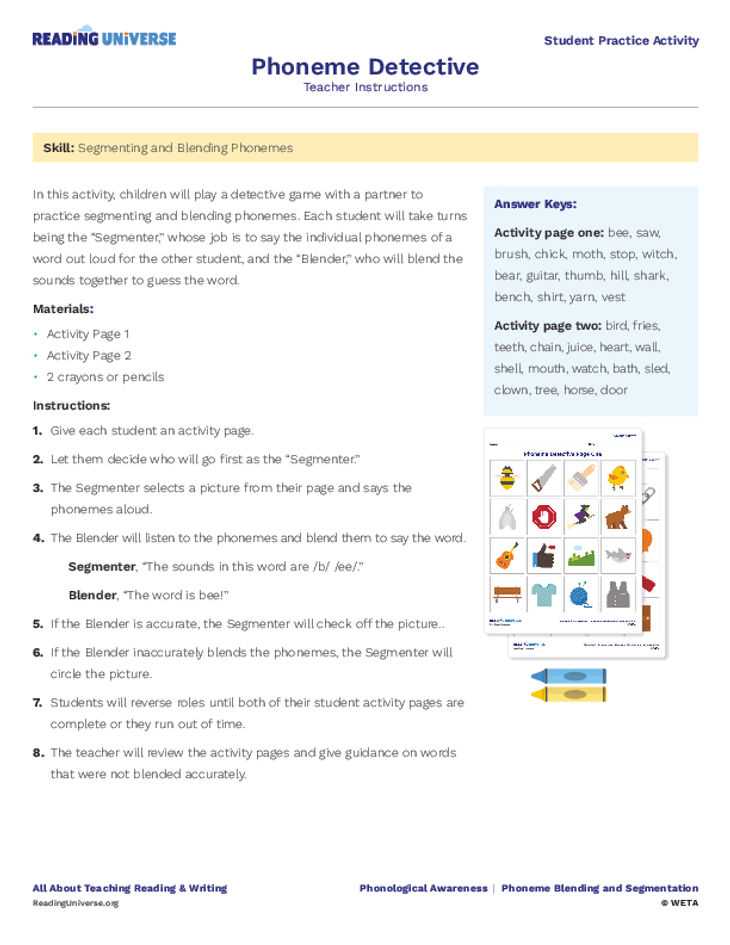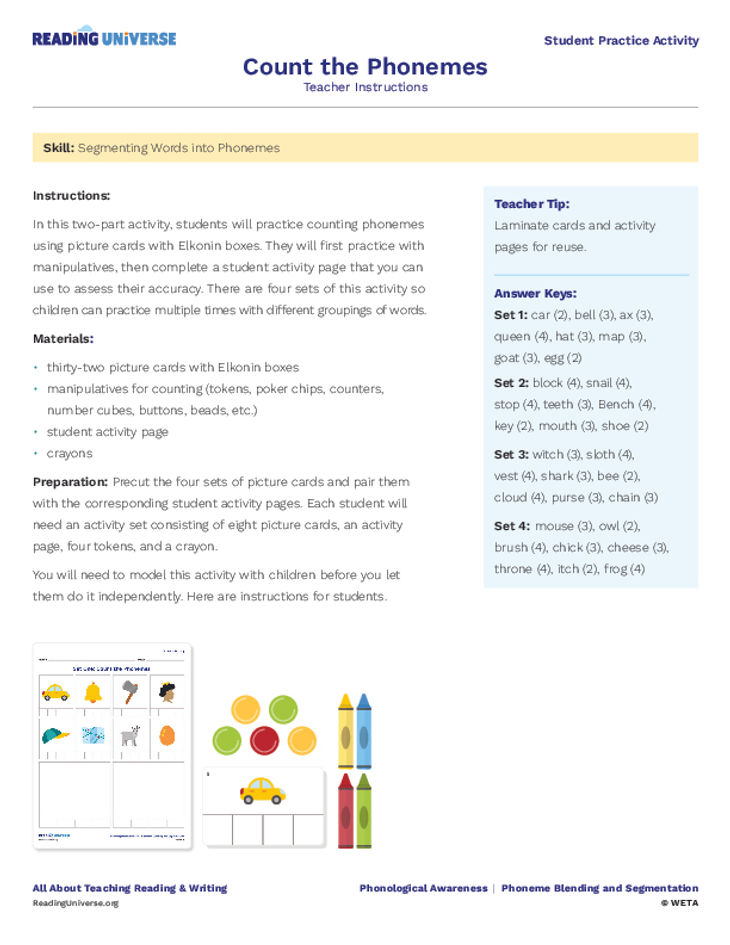
Phonemic Awareness
What is phonemic awareness? The ability to recognize and manipulate individual sounds within a spoken word
New to phonemic awareness? Start with our step-by-step skill explainers: phoneme identification, segmentation and blending, and manipulation.
Looking for teaching materials? Explore all our phonemic awareness resources below.

Phoneme Segmentation and Blending Phoneme Segmentation and Blending Phonemic Awareness Phonemic Awareness Phoneme Identification Skill Explainer Phoneme Identification Skill Explainer Phoneme Identification Skill Explainer Phoneme Segmentation and Blending Phoneme Segmentation and Blending Phoneme Segmentation and Blending Phoneme Segmentation and Blending Phoneme Segmentation and Blending

